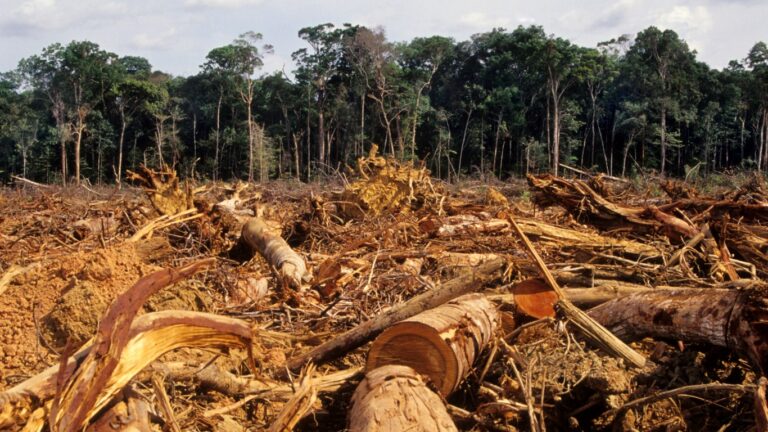Unusual 2023 Atlantic Hurricane Season Ends, Breaks Modern Record

This year’s Atlantic hurricane season was unusual even for an El Niño year. The oceanic phenomenon, which can have a global influence on weather, ecosystems, and economies, occurs every two to seven years on average and was last observed in 2018-19.
While warmer ocean temperatures during El Niño normally lead to fewer tropical storms in the North Atlantic, there were 20 named tropical systems this season –more than in any other El Niño influenced year and ranking fourth for the most-named storms in any year since 1950.
The World Meteorological Organization is behind the process of naming all tropical storms and hurricanes. To be considered a tropical storm, a developing cyclone must have sustained winds of 39 mph or higher. To become a hurricane, storms must produce winds of at least 74 mph, according to the National Oceanic and Atmospheric Administration (NOAA).
In the average year between 1991 and 2020, the WMO named seven tropical storms and seven hurricanes in the Atlantic. Three of the hurricanes tend to reach category 3, meaning the storm has sustained winds of 111-129 mph and there is high risk of loss of life and devastating damage, if the storm makes landfall.
While the trajectory of large cyclone formations are difficult to predict, most named storms do not make landfall. Approximately five hurricanes hit the U.S. coastline in an average 3-year period. Two are typically major hurricanes.
This year there were 16 tropical storms, including one “unnamed storm” posthumously determined by NOAA to have needed a name, and four hurricanes.
Four of the storms – tropical storms Arlene, Bret, and Cindy – formed unusually early, in June. Tropical Storm Don, which formed near Bermuda in July, was among the longest-lasting systems, remaining at Category 1 intensity for 10 days from July 14 to July 24.
There were more named storms than usual, and there were fewer hurricanes during this year’s season. Last year, there were eight hurricanes out of a total of 14 named storms.
20 Named Storms of the 2023 Atlantic Hurricane Season
| Storm | Month | Area | Windspeed (mph) |
| Unnamed storm | January | North Atlantic | >39 |
| Tropical Storm Arlene | June | North eastern Gulf of Mexico | 38 |
| Tropical Storm Bret | June | North of Aruba, Bonaire | 65 |
| Tropical Storm Cindy | June | Central Atlantic | 58 |
| Tropical Storm Don | July | Near Bermuda | 75 |
| Tropical Storm Emily | August | West coast of Africa | 46 |
| Hurricane Franklin | August | Southwest of Bermuda | 115 |
| Tropical Storm Harold | August | Landfall in Padre Island, Texas | 50 |
| Tropical Storm Gert | August | Tropical Atlantic | 58 |
| Tropical Storm Idalia | August | Landfall in Keaton Beach, Florida | 125 |
| Tropical Storm Jose | September | Northeast of Bermuda | 50 |
| Tropical Storm Katia | September | Northwest of the Cabo Verde Islands | 50 |
| Hurricane Lee | September | Near U.S. Virgin Islands, and Puerto Rico | 120 |
| Tropical Storm Margot | September | Southwest of Azores | 65 |
| Hurricane Nigel | September | East of Bermuda | 80 |
| Tropical Storm Ophelia | September | Landfall in Eastern North Carolina | 72 |
| Tropical Storm Philippe | September | West of Cabo Verde Islands | 50 |
| Tropical Storm Rina | September | East of Northern Leeward Islands | 52 |
| Tropical Storm Sean | October | West of the Cabo Verde Islands | 40 |
| Hurricane Tammy | October | North of Antigua | 85 |
The effects of El Niño tend to lead to more hurricanes in the eastern Pacific basin, and the eastern Pacific basin hurricane season was also above normal with 17 named storms. Ten were hurricanes and eight were major hurricanes.
Although none made landfall, Tropical Storm Hilary brought heavy rainfall and flooding to Southern California for five days towards the end of August. Some areas received six times their normal rainfall for the entire month during the storm. With the severity of the storm and its threat to the West Coast, NOAA’s National Hurricane Center issued its first-ever Tropical Storm Watches and Warnings for the Southern California coastline.
Aside from El Niño’s warming effects on the ocean, sea surface temperatures continue to rise to levels consistently higher than at any point in history. According to the EPA, average sea surface temperatures rose most significantly between 1910 and 1940, as well as over the five decades since 1970.

The science of connecting climate change with the frequency of natural disasters is a relatively new field that can be difficult to apply to individual weather events. What is relatively unambiguous is that more hurricanes are likely to form in a warmer ocean. And warmer ocean temperatures are likely to have influenced the unusual hurricane season this year.
“The record-warm ocean temperatures in the Atlantic provided a strong counterbalance to the traditional El Niño impacts,” according to NOAA hurricane forecaster Matthew Rosencrans in a news release from Nov 28 featured by NOAA’s Climate Prediction Center.
Sponsor
Find a Vetted Financial Advisor
- Finding a fiduciary financial advisor doesn't have to be hard. SmartAsset's free tool matches you with up to 3 financial advisors that serve your area in 5 minutes.
- Each advisor has been vetted by SmartAsset and is held to a fiduciary standard to act in your best interests. Get on the path toward achieving your financial goals!
More from ClimateCrisis 247
- America’s East Coast Is Sinking Fast
- World’s Most Important Climate Website Gets New Life
- Today’s Minus 100 Degrees Shows How Cold The World Is
- One Third Of Americans Ignore Danger Of Global Warming






